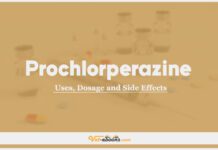Sulfasalazine In Dogs & Cats: Uses, Dosage and Side Effects

Overview
- Sulfasalazine is a prodrug: a diazo bond binding sulfapyridine to 5-ASA is cleaved by colonic bacteria to release free 5-ASA, which acts locally in high concentrations in the colon as an anti-inflammatory.
Uses of Sulfasalazine
- Used in the management of colitis.
- There is a significant risk of keratoconjunctivitis sicca and periodic Schirmer tear tests should be performed.
Dose of Sulfasalazine in Dogs and Cats
Dogs:
- All uses: 15–30 mg/kg p.o. q8–12h, maximum 6 g/day.
Cats:
- All uses: 10–20 mg/kg p.o. q8–12h.
Drug Dosage Calculator
You Should Give:
Side Effects of Sulfasalazine in Dogs and Cats
Contraindications of Sulfasalazine in Dogs and Cats
- Dobermanns appear to be sensitive to adverse effects associated with sulfapyridine.
Some Notes:
- The absorption of digoxin may be inhibited by sulfasalazine, and the measurement of serum folate concentration may be affected.
- Sulfasalazine may cause a reduction in serum thyroxine concentrations.
Tip
Do You Want To Increase Your Veterinary Knowledge and Practical Skills?
You Can Now Browse and Download +3000 Books For Veterinary Professionals & Students Online.
Download Veterinary Books












